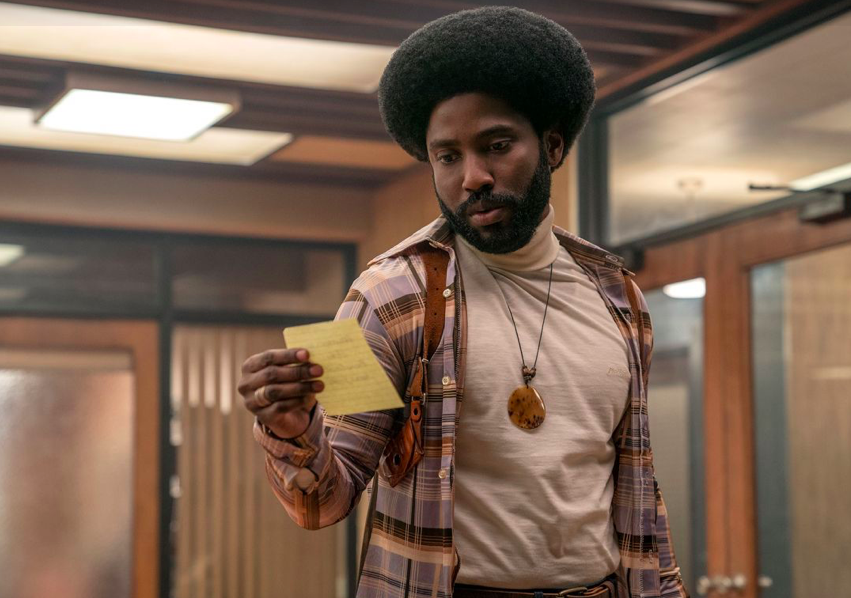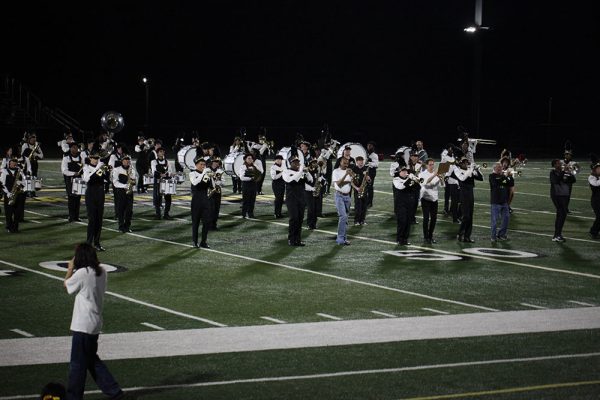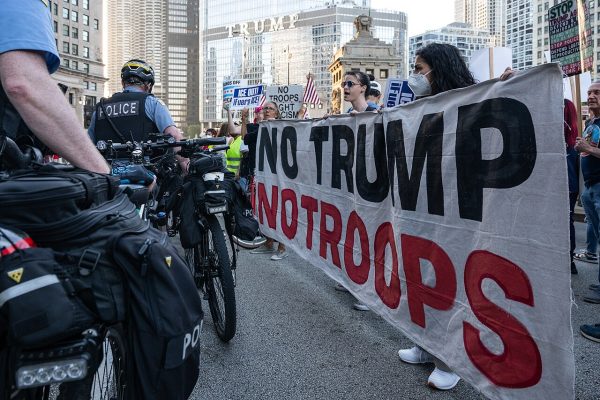BlacKkKlansman Delivers Gripping Storytelling and Compelling Cinematography
BlacKkKlansman is a film based on a true story. In the late 1970s, rookie cop Ron Stallworth (John David Washington), who is African American, joins the Colorado Springs Police Department and leads an undercover investigation into the local KKK chapter with the help of fellow officer Flip Zimmerman (Adam Driver), who is white. The movie’s premise alone is exciting, and the film is masterfully executed.
This film’s cinematographer, Chayse Irvin, did an excellent job here. Not only are the shots unique and varied, they also help deliver the drama. Scenes that sit calmly in the valleys between climaxes are wrought with well-executed, though standard, angles.
Intense scenes still feature eye candy, like in one scene where two characters, guns drawn, seem to float down a hallway to communicate the intensity of the moment. The music of this movie is stunning. One might expect the smooth saxophone of the main theme to be jarring. Surprisingly, it works perfectly.
The cast of BlackkKlansman stands above that of other movies I have seen. Their performances are not just convincing, but realistic and relatable. Each character talks differently, even if it is only in subtle ways. On top of that, a few characters go undercover (as seen in the trailer) and through that must be actors playing actors, once again changing their voice. For example, Ron Stallworth is capable of speaking like a black man or a white man, while Flip Zimmerman has a deep, yet down-to-earth manner of speaking.
It is difficult to judge the plot and characters of a film based on a true story, but one can judge its historical accuracy. While BlackkKlansman is mostly true to life, there are a few flourishes that Hollywood is known for putting in films, based on true story or not. For example, the protagonist’s love interest, Patrice (played by Laura Harrier) is completely fictional.
The addition of Patrice–along with a few other changes–is not enough to make this movie feel like it became “Hollywoodized”. On top of that, the characters of this film are convincingly drawn through the phenomenal acting mentioned earlier.
One thing I was concerned about is the portrayal of the KKK. Depictions of hate groups must draw a delicate line between casting them as caricatures and seeming to endorse their hateful ideology. I find it problematic to turn a person or group into a cartoon just because they don’t have the popular opinion, especially the Ku Klux Klan, because if we do that we are falling into the same trap of dehumanizing others. Also, realistic human villains are often more compelling.
I’m happy to say that the KKK members are very believable in this movie. The Klan chapter of Colorado Springs isn’t written as a group of Sith Lords, but rather as a group of human beings who have a hateful culture, acting as one would expect them to. They talk hatefully about minorities, yet they also have families they love and traditions they partake in.
In a time when subjects such as race, prejudice and the KKK are sensitive, it is nice to see a film that explores these topics in a context detached from our current political cesspool. I give this movie a 90/100

Joey began writing for the Beachcomber in 2017. He covers movie and game reviews. In addition to writing for the Beachcomber, he plays video games.










![“My parents have always said that education is important. My parents are Chinese immigrants, I'm Chinese American, [and that's a] value that has always been ingrained in our community,” said Senior Lyndia Zheng, pictured with Tony Zheng](https://bcomber.org/wp-content/uploads/2025/10/DSC_4244-600x400.jpg)


